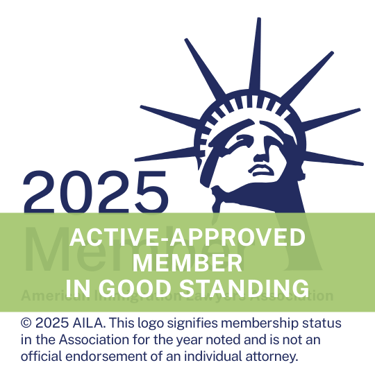Navigating Consular Processing: A Pathway to the Green Card from Abroad
For individuals applying for U.S. permanent residency outside the United States.
IMMIGRATION
5/25/20252 min read


If you're living outside the United States and pursuing a green card, your journey to permanent residency will likely involve a process known as consular processing. At Khanections Law PLLC, we help clients around the world understand and navigate this pathway with clear guidance and attentive support every step of the way.
What is Consular Processing?
Consular processing is one of the two main ways to apply for a green card. It is used by applicants who are outside the United States when their immigrant visa becomes available. Instead of filing for adjustment of status within the U.S., you attend an interview at a U.S. embassy or consulate in your home country.
Once your underlying immigration petition—such as an EB-5, EB-2 NIW, or family-based petition—is approved and a visa is available in your category, the National Visa Center (NVC) will begin coordinating the next steps. This includes gathering required documents and eventually scheduling your consular interview.
Who Should Use Consular Processing?
Consular processing is typically the route for individuals who:
Reside outside the U.S.
Are not eligible for adjustment of status due to unauthorized entry or overstays
Prefer completing the green card process while abroad
Have an immigrant petition approved under categories such as EB-5, EB-2 NIW, EB-1, or family-based visas
It’s important to note that consular processing is not limited to employment-based visas. It is a core part of how many people across all green card categories begin their journey to the U.S.
The Process: What to Expect
Here is a general outline of the consular processing timeline:
Petition Approval
Your immigration petition—whether an I-130 (family-based), I-140 (employment-based), or I-526 (investment-based)—must be approved by USCIS.Visa Availability
Once your priority date becomes current based on the Visa Bulletin, your case is transferred to the National Visa Center (NVC).Document Collection and DS-260
You’ll submit financial and civil documents to the NVC and complete Form DS-260, the immigrant visa application.Consular Interview
The NVC will schedule your green card interview at a U.S. consulate or embassy. During the interview, a consular officer will review your application, ask questions about your background, and determine your eligibility.Visa Issuance and Entry to the U.S.
If approved, you’ll receive an immigrant visa in your passport. Upon entering the U.S., you’ll be processed at a port of entry and mailed your green card shortly after arrival.
How Khanections Law Can Help
Consular processing may seem daunting, especially when dealing with document requirements, international timelines, and consulate-specific procedures. Our firm assists with:
DS-260 form preparation and document submission
Communication with the National Visa Center
Interview preparation and consulate-specific guidance
Supporting dependent family members
Navigating delays or complications, such as security checks or additional documentation
Whether you’re applying from Europe, Asia, Latin America, Middle East or anywhere in the world, we make sure you feel informed, prepared, and supported throughout the process.
Your Path to the U.S. Starts Here
Consular processing is a vital step for many individuals on their path to U.S. permanent residency. At Khanections Law PLLC, we are committed to helping you make a smooth transition to your new life in the United States.
Schedule a consultation today to explore your green card options through consular processing: www.khanectionslaw.com
Contact details
Khanections Law, PLLC
The Firm’s principal Attorney, Mr. Khan, is licensed in the District of Columbia, and authorized to practice Federal Immigration and Naturalization Law in all 50 states and U.S. territories pursuant to 8 CFR § 1292.1. The Firm’s legal services are strictly limited to matters governed by federal law.
Copyright © 2025. All rights reserved. Khanections Law, PLLC
1550 Wilson Boulevard - Suite 700
Arlington, Virginia 22209
703-804-0099 - Phone
+1-703-928-8525 - WhatsApp
703-804-0098 - Fax
admin@khanectionslaw.com


By Appointment Only
